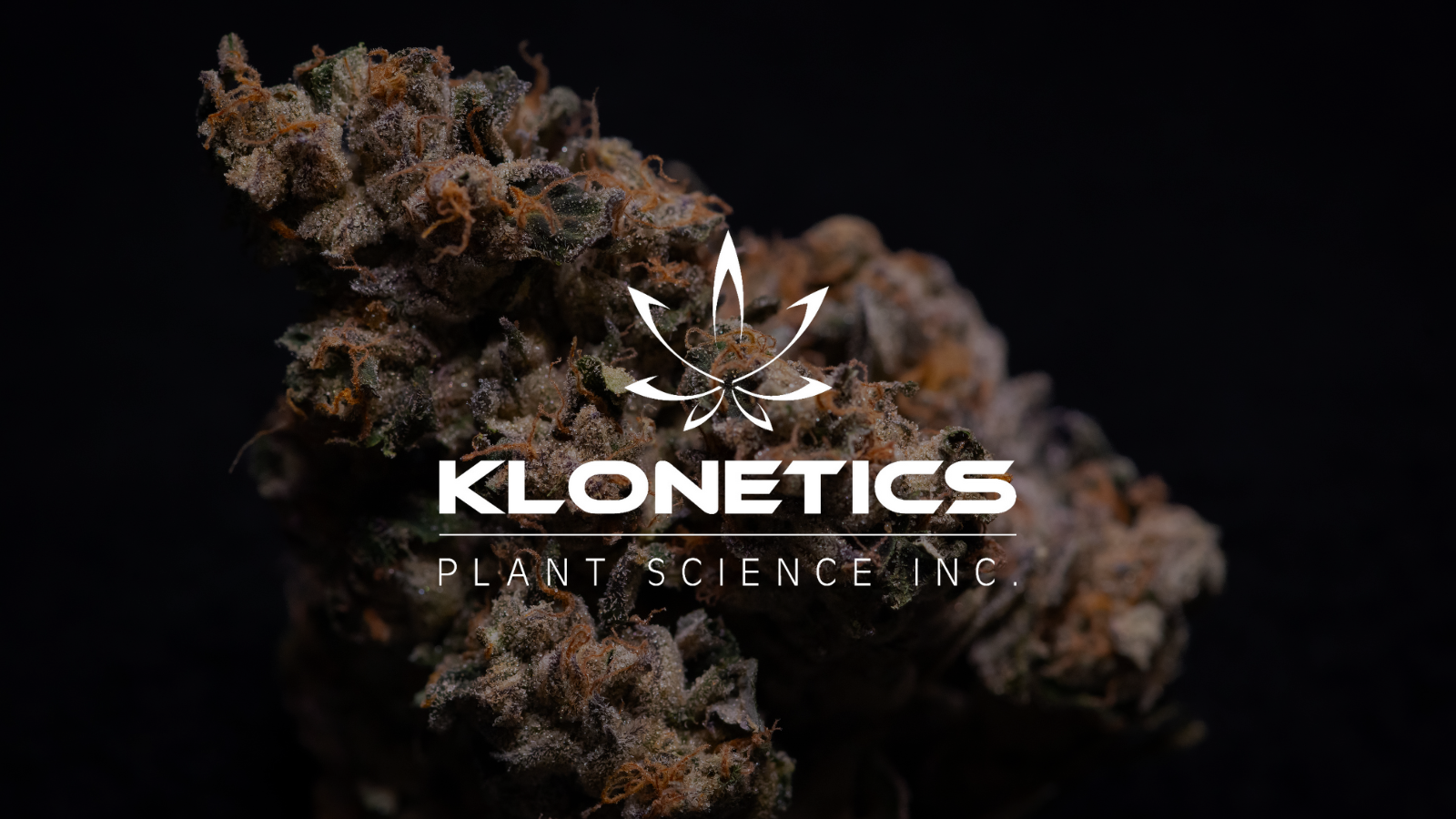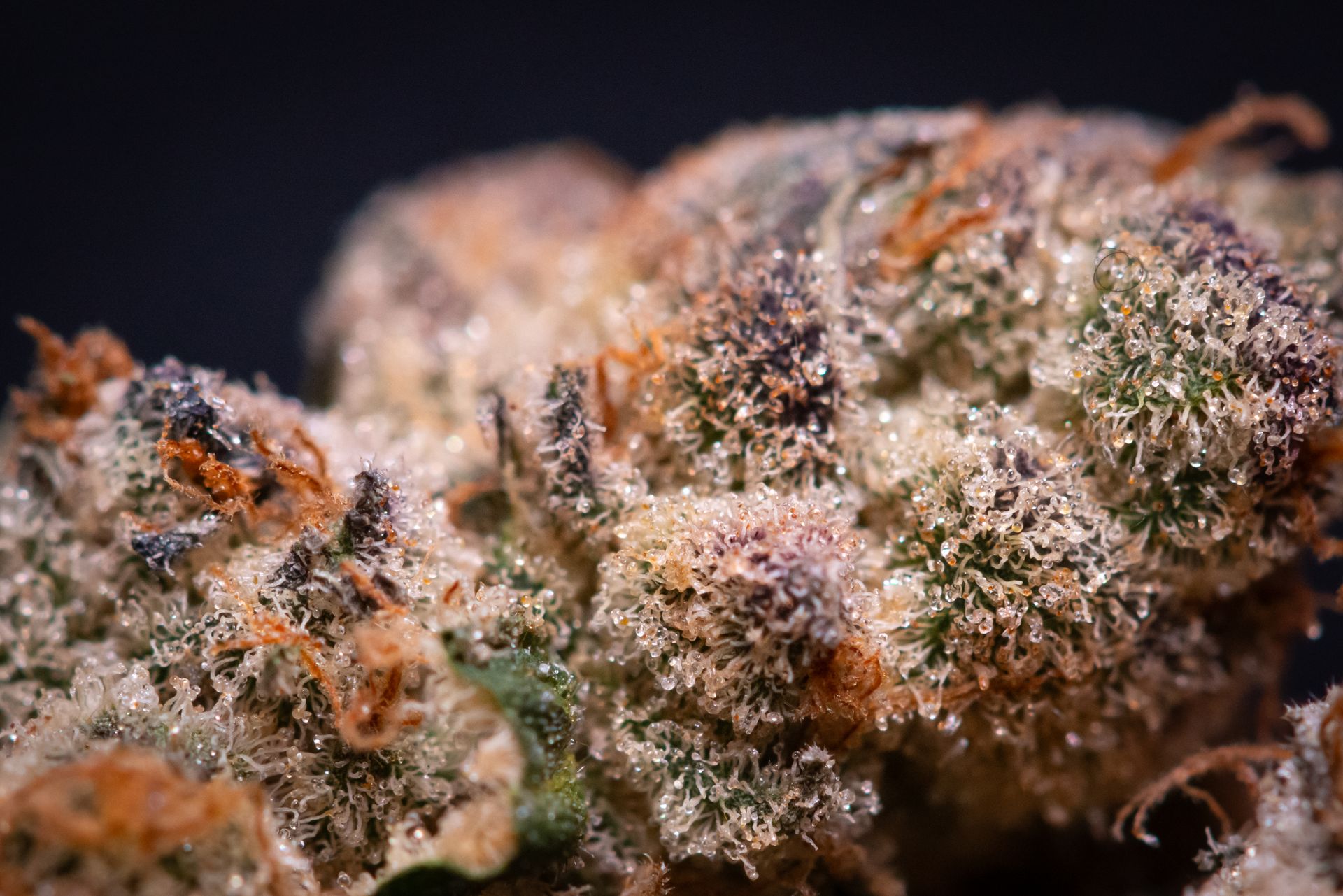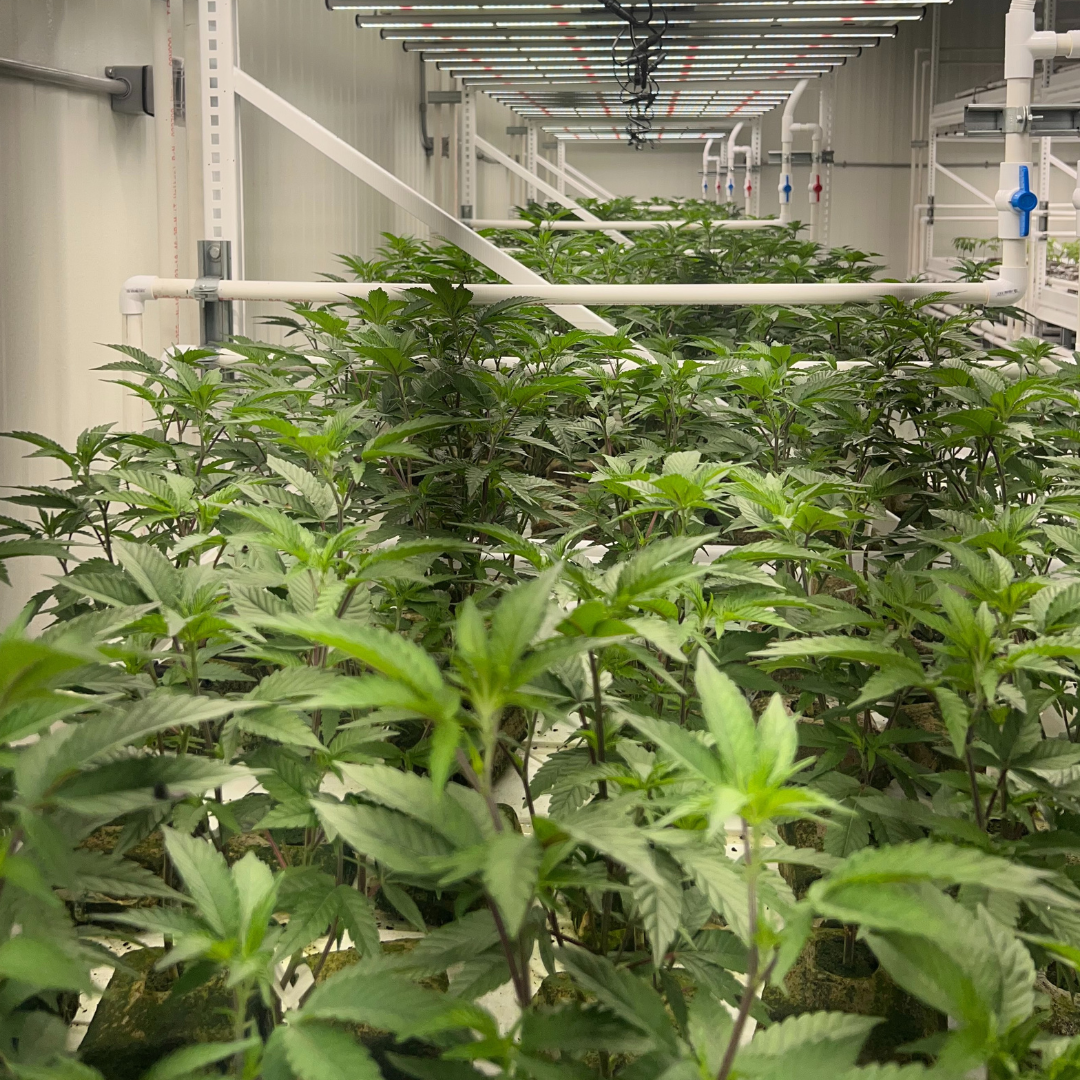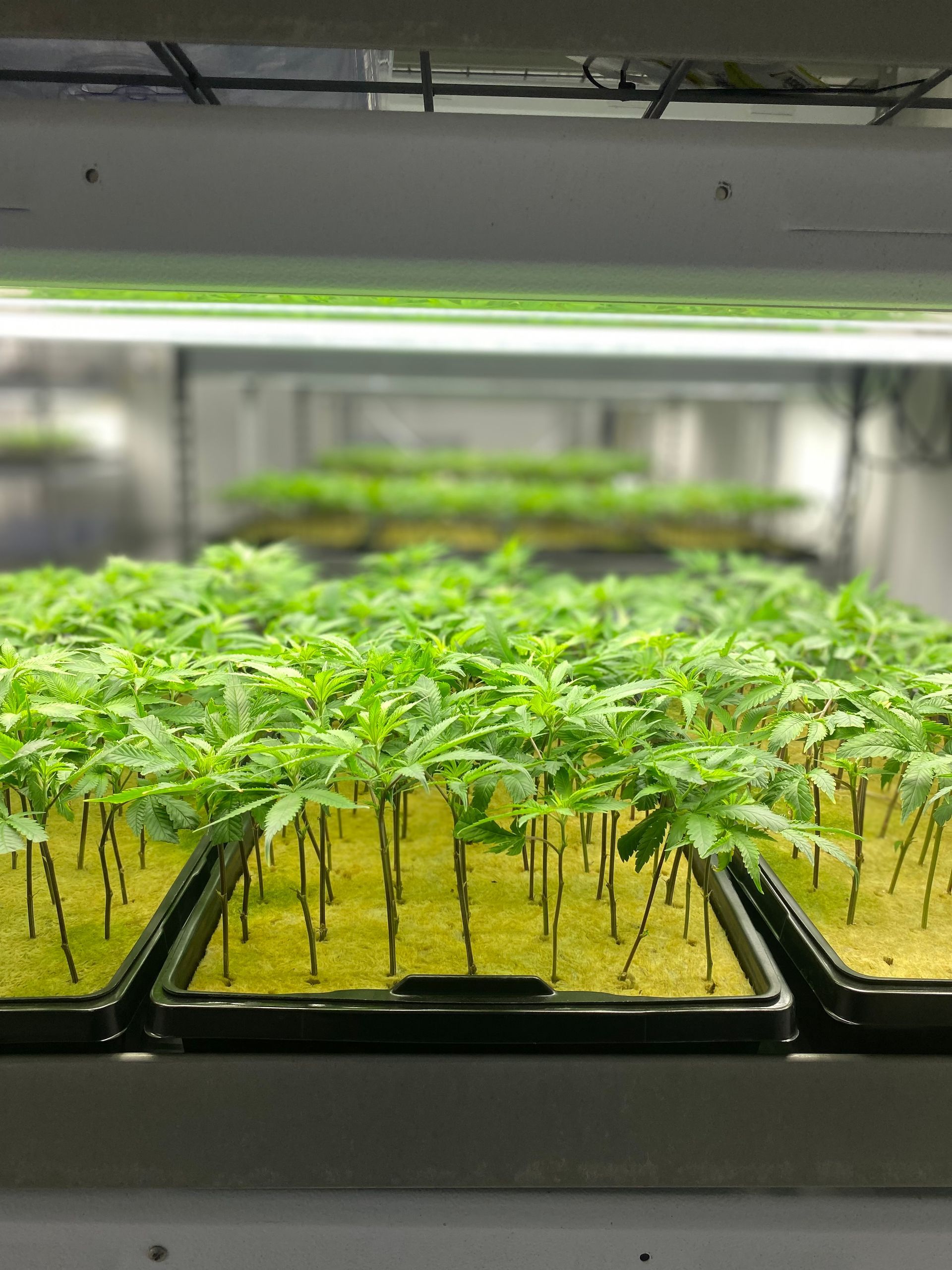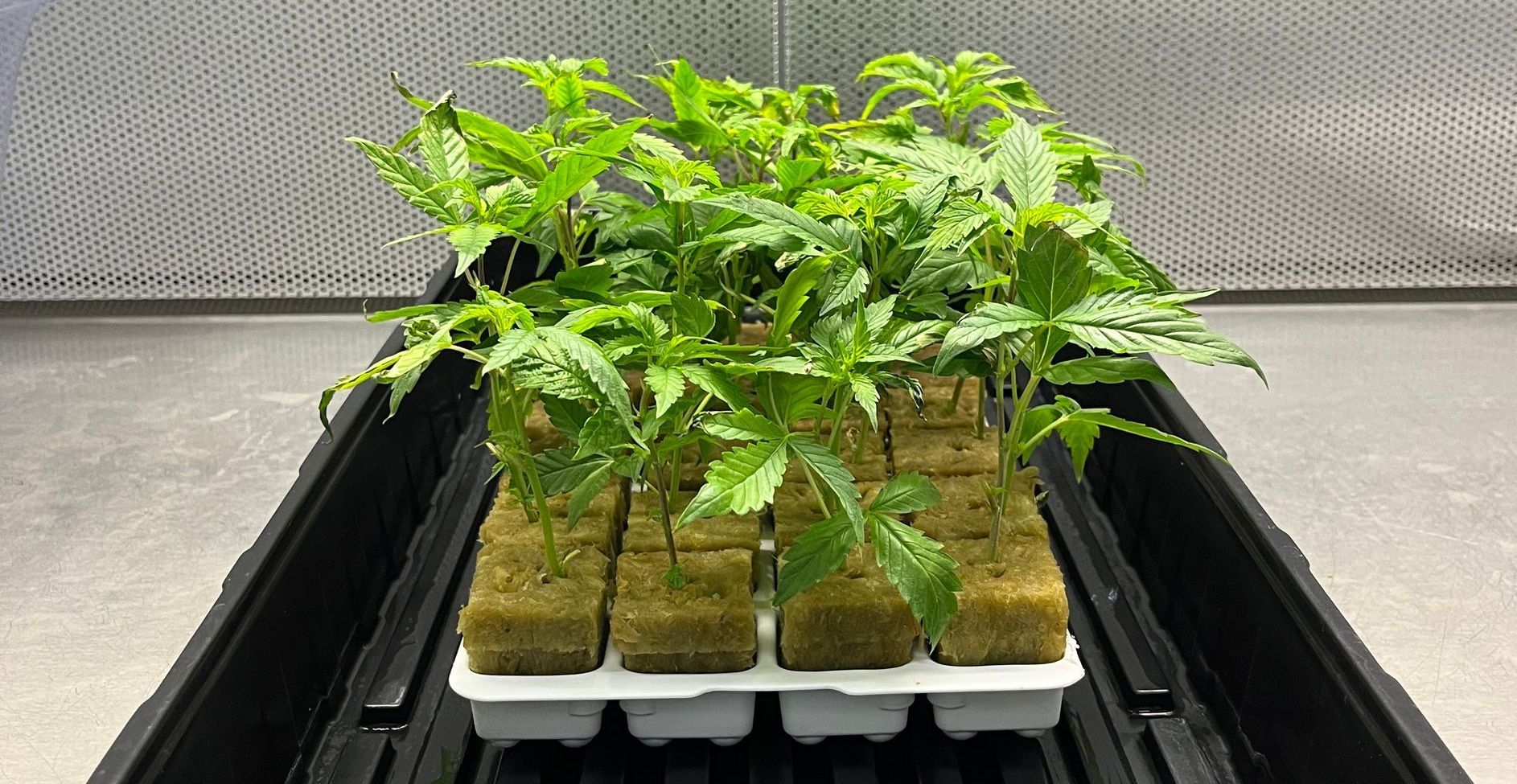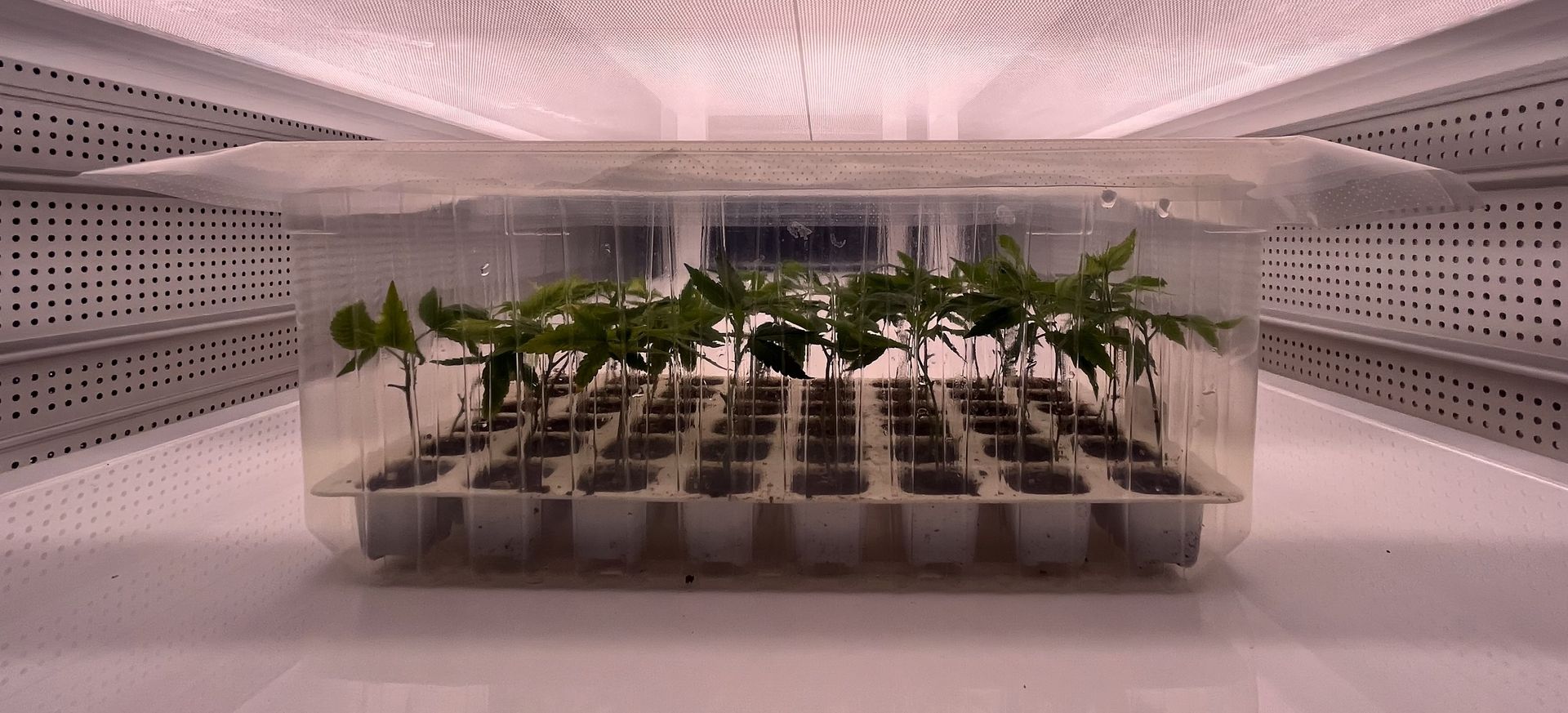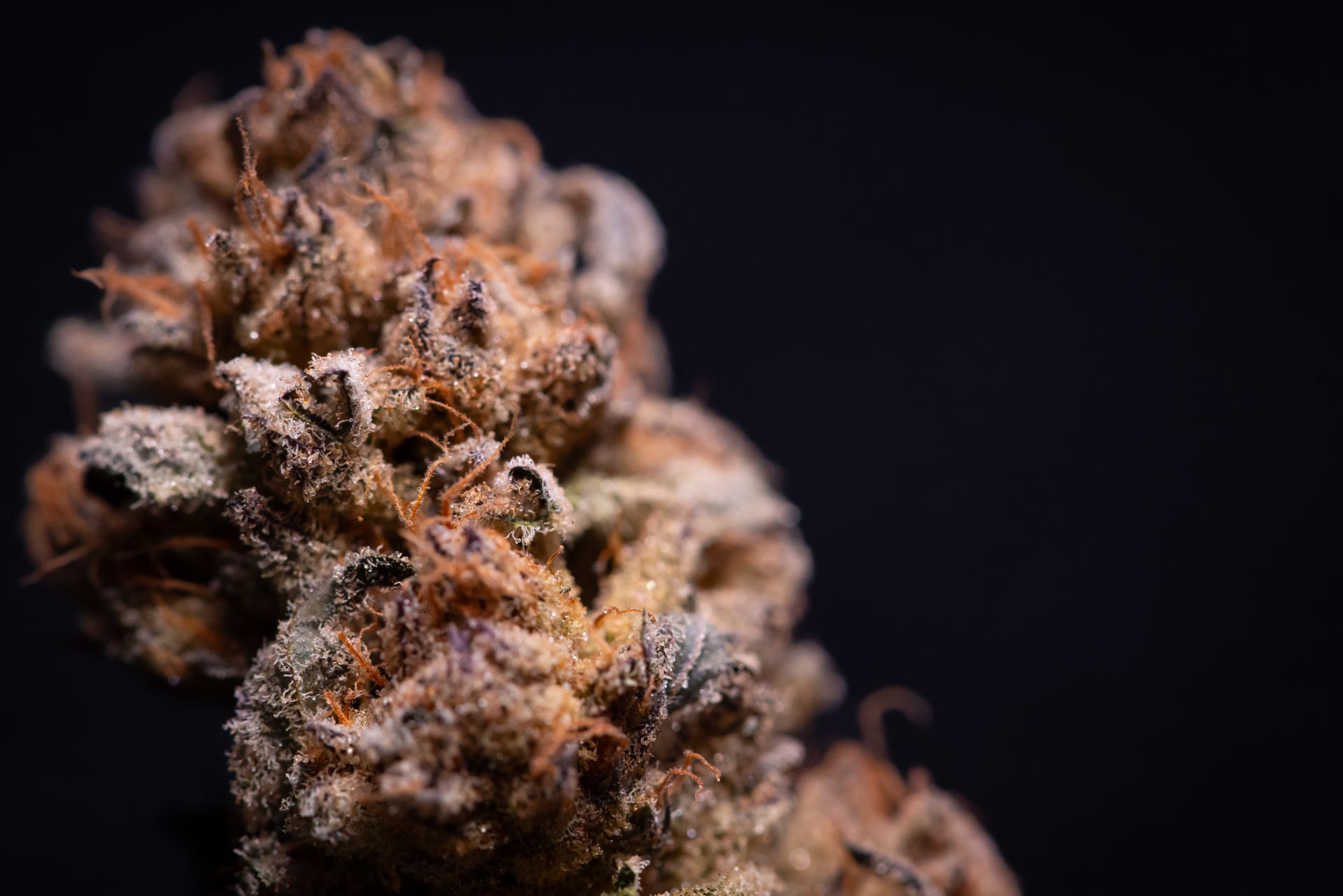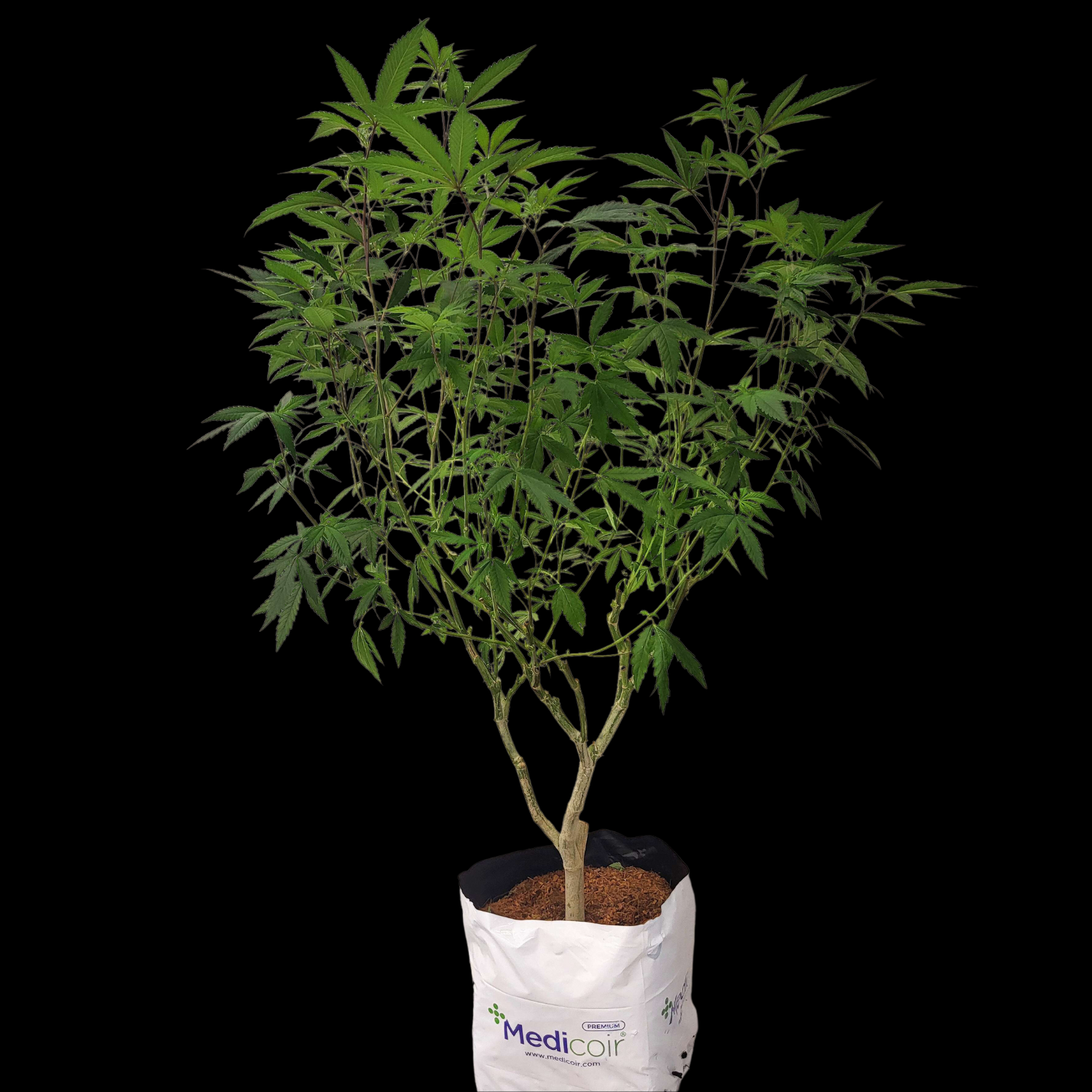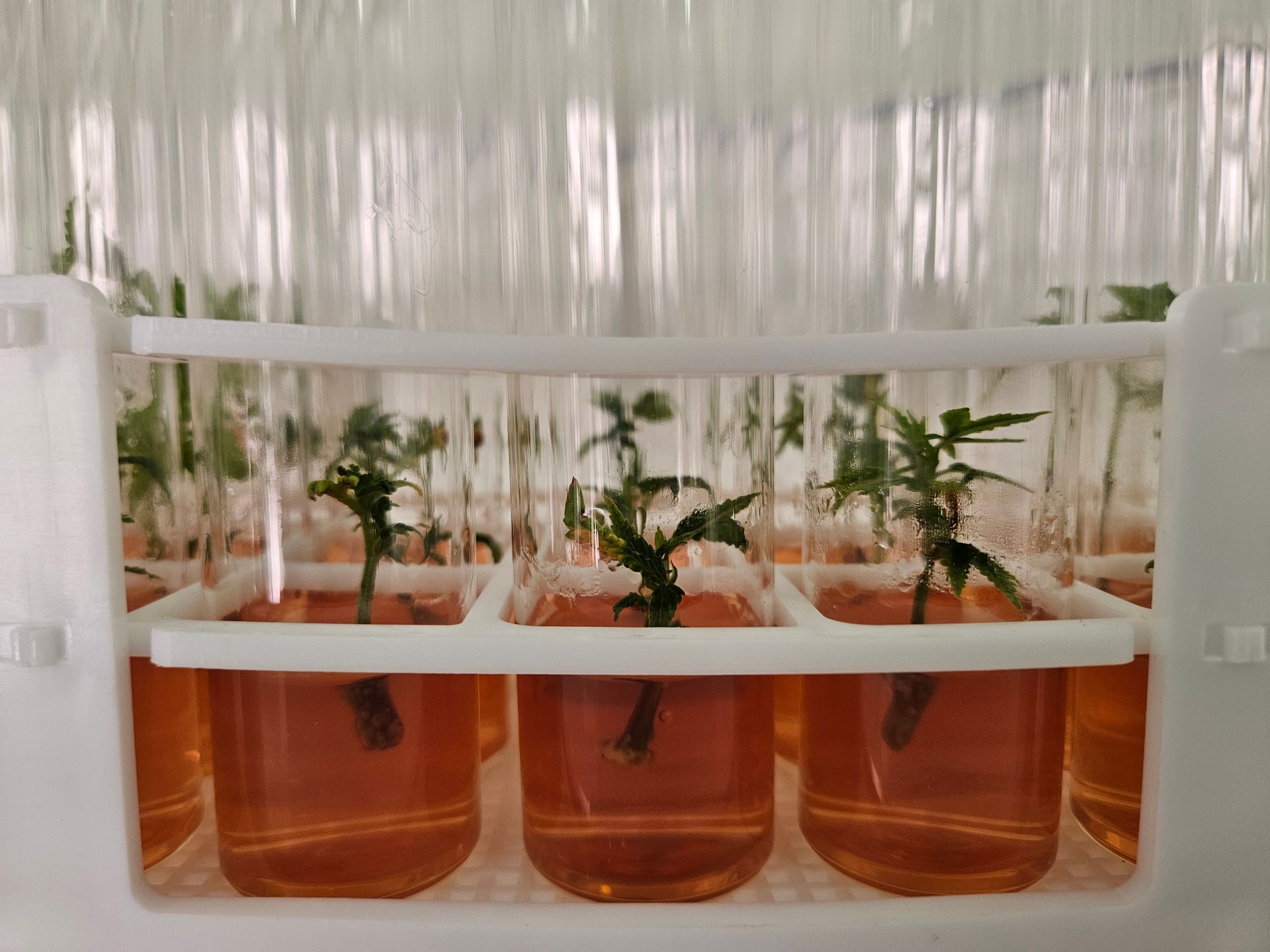Cannabis Tissue Culture Services for Large-Scale Production
Cannabis Tissue Culture Services for Large-Scale Production
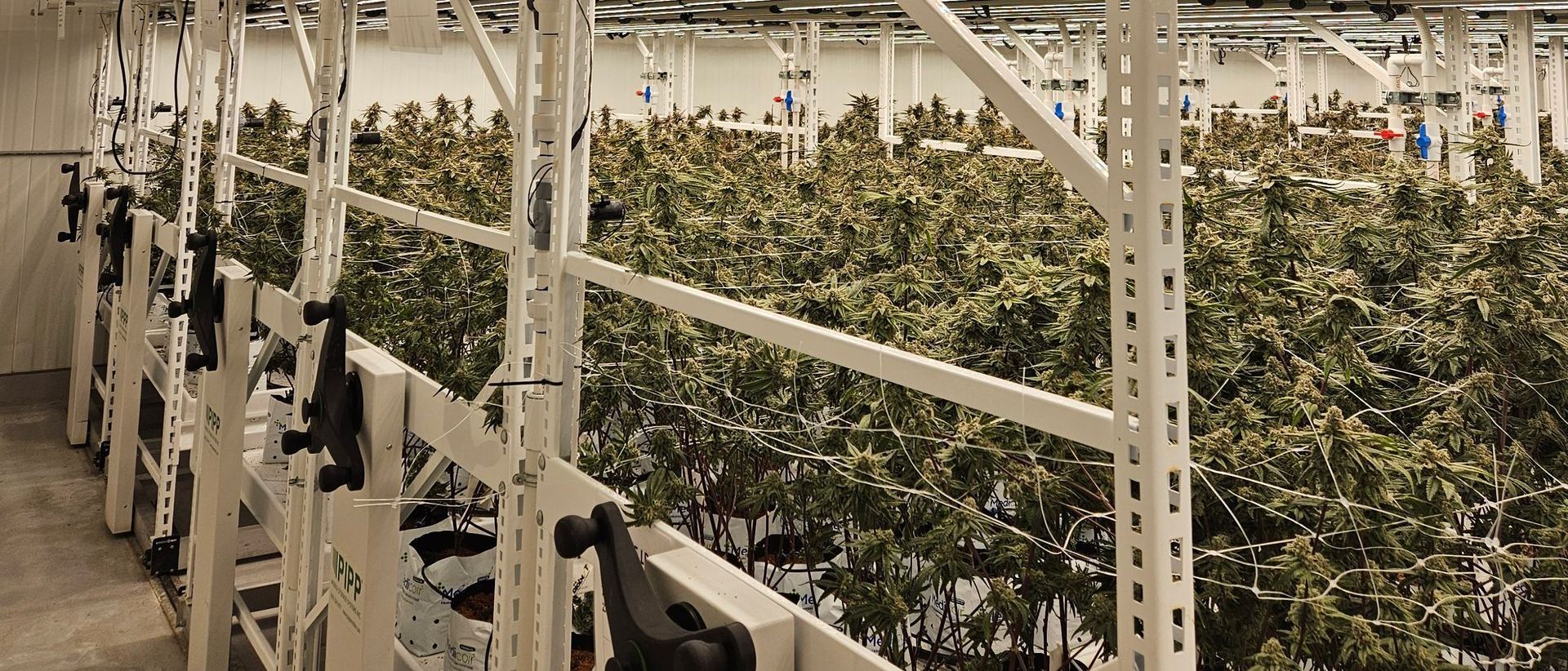
Have you ever thought about how the cannabis industry grows more efficient and profitable? Cannabis tissue culture services for large-scale production are changing the game. This method helps create disease-free, consistent plants.
It meets the increasing demand. Klonetics Plant Sciences leads in plant biotechnology. They guide growers through modern cannabis farming challenges.
The marijuana industry is on the rise. Analysts expect it to grow from $13.4 billion to $33.6 billion by 2025. This growth highlights the need for effective cultivation methods.
Tissue culture is revolutionizing cannabis farming. It offers better yields and keeps genetics consistent12.
This article will dive into cannabis tissue culture. We will look at its key benefits for large-scale production. It shows how to meet consumer needs in this fast-changing industry.
Key Takeaways
- Cannabis tissue culture promotes the propagation of disease-free plants.
- Efficient scaling capabilities allow for increased production without the need for extensive facility expansions.
- Tissue culture techniques can produce high-quality, genetically consistent plants.
- Tissue culture requires significantly less space compared to traditional propagation methods.
- Companies can optimize yield potential while safeguarding genetic material.
Introduction to Cannabis Tissue Culture
Cannabis tissue culture is a cutting-edge technique in plant biotechnology. It lets us quickly grow many cannabis plants from just one piece, using clean methods. This means all the grown plants are free from disease. By using micropropagation, growers can make lots of identical plants efficiently, boosting yield.
History shows that cannabis faced strict rules in places like the US and Canada since 1912 due to its effects. These laws slowed down research and the sale of cannabis products for a long time. Yet, big changes in laws around 2014 started allowing cannabis for both medical and fun uses worldwide. This has led to new ways of growing cannabis, including tissue culture.
One big plus of tissue culture is it doesn’t need a lot of room. Unlike old methods that needed large spaces, this method uses stacked jars. This saves space and lowers risks for those growing it. Growers can make lots of healthy clones in a way that’s hard with older methods.
The tissue culture process has steps like starting, multiplying, rooting, and getting used to the new environment. The aim is to create strong, uniform plants. Using tissue culture can greatly improve cannabis plant quality. This allows growers to expand their operations while keeping their crops’ genetics and quality top-notch of their crops3.
The Importance of Tissue Culture in Cannabis Cultivation
The use of tissue culture is a game-changer in cannabis cultivation. It helps commercial growers produce plants that are high-yielding, of great quality, and genetically uniform. This method tackles issues like pests and diseases head-on4. Given the expected growth of the cannabis market to $33.6 billion by 2025, adopting such techniques is crucial for growers aiming for efficiency and healthy plants4.
Tissue culture shines by allowing the growth of thousands of mature plants from a tiny piece of the original plant. This space-saving technique leads to massive multiplication in a small area, vital for boosting production in the booming market4. With Canada legalizing cannabis for fun, there's a push for such innovative methods. They help in growing more without losing quality5.
The fast-paced growth of the cannabis market highlights the importance of keeping plant genetics consistent. Tissue culture ensures plants are genetically identical. This means products are safer and free from bad chemicals4. Even though it needs a clean and controlled environment, tissue culture rewards growers with high-quality yields4.
As different types of cannabis are developed, the role of tissue culture becomes more crucial. It supports mass production while keeping the plants' genetics intact. This is key for success in the competitive cannabis scene5.
Benefits of Cannabis Tissue Culture Services for Large-Scale Production
Cannabis tissue culture services provide big advantages for large-scale growers. They help optimize yield and efficiency. As the cannabis industry grows, more people see the value of tissue culture. This method boosts production efficiency, making plants healthier and more consistent genetically.
Compact Operations and Space Efficiency
Tissue culture stands out for its space-saving ability. Unlike traditional methods that need a lot of space, tissue culture fits about nine plants in just 3 square inches6. It saves on space, cuts energy use, and lowers costs. This leads to quicker maturity and more production7.
Scaling Capabilities Before Facility Expansion
Tissue culture helps growers expand without needing more space right away. It offers the flexibility to quickly produce disease-free clones7. So, companies can meet market demands faster. This makes supply management smoother and ensures on-time deliveries.
Enhanced Genetic Consistency and Clonal Multiplication
Producing clones that are genetically the same is key in tissue culture. It reduces variability, guaranteeing the same quality in all batches. This consistency is critical in the high-standards cannabis market.
Tissue culture also means disease-free growing and preserving genetic material. It makes plants stronger against diseases and environmental changes68.
"An elegant laboratory setting showcasing state-of-the-art cannabis tissue culture techniques, vibrant green cannabis plants in sterile containers, high-tech equipment, researchers in lab coats working diligently, an atmosphere of innovation and professionalism, subtle branding elements representing 'Klonetics' integrated into the design, bright lighting highlighting the health and vitality of the plants."
Understanding Micropropagation Techniques
Micropropagation is key in cannabis tissue culture, for making lots of plants from tissue samples. The process starts with media preparation. This is where nutrients and growth helpers are mixed for cells to grow well. Then, everything is sterilized to kill germs that might ruin the tissue culture. It's super important to keep everything clean to avoid contamination, which could mess up the cloning of plant tissues.
After placing the samples in the nutrient-rich media, micropropagation really gets going. It includes steps like initiation, multiplication, rooting, and acclimatization. Each part needs close attention for the plants to grow best. This way, growers can get lots of the same plants, increasing yields and keeping the plant’s genes the same. This shows how micropropagation could really boost productivity in growing cannabis9.
But, micropropagation isn’t just for making more plants. It also helps save plants sick with diseases, like HpLVD. With tissue culture, growers can make healthy, strong plants ready to grow in different places9. This new way of making plants points to big changes in how we grow cannabis and in plant science, as further research into genes shows10.
Utilizing Bioreactors in Cannabis Tissue Culture
In cannabis tissue culture, bioreactors in micropropagation are key. They outperform traditional methods. These vessels allow for growing many plant cells at once, leading to faster growth and more plants. Using cannabis bioreactors properly allows for large-scale production while keeping plants healthy. This is vital to meet the increasing demand for cannabis products.
Role of Bioreactors in Mass Propagation
Bioreactors solve many propagation challenges, like rooting and adapting plants. Their design includes a cool feature: temporary immersion systems (TIS). This improves mass propagation rates. By changing immersion times and adjusting liquid volume, risks like asphyxia and too much water are reduced. This makes propagation more efficient1112.
Automation and Enhanced Production Rates
Automation in bioreactors has changed cannabis growing for the better. It makes the process smooth and consistent while cutting down on work. Using liquid instead of gel makes it easier to refresh nutrients and uses less agar. This helps plants grow faster and reduces costs. It's great for growers looking to produce more at lower costs. Automated bioreactors can greatly increase production, helping growers meet market demands1112.
By using bioreactors in micropropagation, cannabis growers can make their operations more efficient and profitable. This sets them up for success in a tough market11.
Clean Room Facilities: Ensuring Sterility
In the world of cannabis tissue culture, keeping everything cannabis sterility is key. Clean room facilities help create a space where contamination is rarely a worry. This helps make sure that young plants grow healthy and strong. These rooms have strict cleaning rules and use air filters and controls to keep everything sterile.
Riviera Creek stands out in the medical cannabis industry for their high standards. They use 6000 square feet just for growing flowers13. For 13 years, they have grown cannabis with an aeroponic system, avoiding pesticides or fungicides13. Their work in tissue culture fights mold, showing why clean rooms are important13.
Tissue culture in cannabis brings big benefits. It lets growers make many plants from just a small tissue piece14. This means they can produce more efficiently and keep all plants the same genetically14.
Setting up clean rooms needs investment. Though they might be expensive at first, prices may drop as demand and technology improve14. Training and advice, like that from Plant Cell Technology, help growers learn how to use these spaces well13.
Certified Cultivars and Pathogen-Free Plants
Tissue culture is key in creating certified cultivars for top-notch cannabis growth. It allows growers to make sure their plants are strong and pathogen-free. For example, Riviera Creek uses advanced methods in their unique aeroponic space. They plan to use tissue culture more to overcome previous issues like Botrytis15.
Tissue culture can turn a small piece of plant into thousands of mature ones. It saves space and leads to healthier plants, cutting down disease risks16. This means growers can produce large, healthy crops consistently. Such technology supports the booming market, expected to hit $33.6 billion by 202516.
How Cannabis Tissue Culture Services Optimize Crop Yields
The cannabis industry is changing with tissue culture services. These services help increase cannabis yields a lot. Tissue culture lets us quickly make many plants from just one tissue sample. This improves how much we can grow and makes it easier to scale up18. It makes sure all plants are the same as the original, so they grow consistently18. This leads to predictable yields and quality, which is important for success in the market.
Tissue culture also helps solve common problems for cannabis growers. Traditional ways of growing can lead to issues like diseases and pests19. But tissue culture takes place in a super clean space, which means plants grow faster and healthier. It allows growers to produce plants without diseases, even in small spaces, and keep important genetics for later19.
Companies like CULTA and Lume Cannabis Co. are using tissue culture to create healthy plants and save their genetics19. This reduces the risk of sick plants and keeps high-quality standards20. Keeping genetics through tissue culture also helps save important plant traits for future use20.
Cannabis tissue culture is a great way to keep plants strong and healthy20. Even though it might cost more at the start and plants might grow slower, the benefits are huge for big grow operations1819. Learning tissue culture can help growers do better and find new success.
Operational Risks and Cost Reduction with Tissue Culture
Tissue culture can help cannabis growers cut down on risks. Advanced techniques lead to even yields and set grow times. This means lower costs21. Traditional greenhouses often lose about 32% of their potential crops to pests and diseases21. But tissue culture can turn one small sample into hundreds or thousands of the same plants22. This not only saves money but also lowers the chance of issues in mother rooms21.
For tissue culture's success in cannabis, growers and rules makers need to work together. Understanding the costs of starting tissue culture labs is key for smaller growers. As the industry grows, using tissue culture will be crucial for handling risks and increasing profits.act representation of operational risks in cannabis cultivation, featuring at, showcasing advanced scientific processes and meticulous care."
Quality Control and Compliance Standards in Cannabis Labs
It's vital to have top-notch assurance and compliance in growing cannabis. This ensures the safety and quality of the products. Standards for cannabis labs aim at making the industry more transparent and consistent. There's a big need for strict quality control. This is because many labs have been caught faking test results24.
It's a good idea to have tests done by third parties. This helps in getting honest test results and keeping transparency in production24. Cannabis labs are closely watched to make sure they follow quality control steps. Being committed to these rules helps in maintaining high-quality products. It also supports the growth of the cannabis business.
Cannabis Tissue Culture Services for Large-Scale Production
In the growing world of large-scale cannabis farming, tissue culture services are key. These services help growers use advanced methods for creating top-quality cannabis. They allow for many identical plants to grow in a clean environment, reducing disease risks seen in older methods.
Tissue culture brings big advantages, especially in commercial farming. It's been found to produce about 75 percent more than older ways when looking at plant yield per square foot. Plus, it's 36 times more productive than cloning by cutting26.
The demand for tissue culture services is skyrocketing. Predictions say the cannabis market will hit $33.6 billion by 20251. This method supports producing hundreds of plants in a small area. It's great for commercial growers who need to keep up with market demand without compromising quality.
Putting money into tissue culture tech can lower risks and costs for growers. It promises dependable yields and boosts overall income potential271.
Companies like Klonetics Plant Sciences stress the value of smart partnerships and automation. These innovations ensure strong plant genetics tailored for cannabis growing. The use of tissue culture means plants will grow as expected, offering growers confidence in their crops.
Challenges in Cannabis Tissue Culture Implementation
Starting tissue culture for cannabis growers brings some big challenges. The main issues are contamination and the cost of starting up. It's important to handle these issues well to make tissue culture work.
Common Contamination Issues and Solutions
Contamination is a big problem in tissue culture. It comes from the air, equipment, and even people. Cannabis growers can fight this by cleaning everything very carefully, using special clean air hoods, and keeping clean themselves. Keeping everything sterile helps plants grow healthy and strong. If plants are not kept clean, you can't grow as many from one sample28.
Understanding Initial Investment and Setup Costs
Getting started with tissue culture costs a lot. You need the right tools, a clean space, and trained workers. Even though it's expensive, the benefits are worth it in the long run. Using advanced techniques lets you make new cannabis types and grow them quickly. Working with universities can help with the know-how needed for success29. Also, the growing market means investing in these methods could pay off28.
Case Studies: Success Stories in Cannabis Tissue Culture
Cannabis tissue culture has changed the game for many companies. Klonetics Plant Sciences stands out in this area. They've used smart growing methods to make more plants. This approach has led to a big jump in plant numbers and uniformity in genetics.
Klonetics has been able to create thousands of plants without disease from just one explant. This technique saves important genetics and makes plants stronger against market competition. These efforts show the power of tissue culture in overcoming usual growing limits.
Klonetics also uses automated systems to make growing easier and cheaper. This has boosted their work and cut down on costs. With the cannabis market possibly hitting $33.6 billion by 2025, such innovations put companies like Klonetics ahead30.
Future Trends in Cannabis Tissue Culture Technology
The future of cannabis tissue culture is set for big changes as technology advances. The industry is growing, and there's more interest in tissue culture innovation to improve production. Around 560 secondary metabolites are found in cannabis, with cannabinoids and terpenes being very important31. Also, the CBD market could hit $16 billion by 202531.
New trends in plant biotechnology, like automation and genetic mods, are key for better tissue culture methods. Old ways of growing cannabis are slow and expensive. So, people are looking for better options31. Using bioreactors helps solve some of these problems, lowering costs31. Hairy root culture is also getting popular for being cheap and growing lots of biomass31.
Plant growth helpers, genetics, and nutrients are very important for tissue culture success31. The amount of cannabinoids a plant can make depends on the part of the plant and its genes31. With these advancements, cultivating cannabis will be more efficient and offer new chances for breakthroughs.
Conclusion
Cannabis tissue culture services are changing the game for growers. They make growing operations more efficient and big. Using these new methods, growers can create lots of disease-free, genetically identical plants. This meets the growing need for top-quality cannabis products32. Choosing and growing cannabis with special traits boosts yield and quality. It also prepares the industry for future success32.
More and more commercial growers are starting to use tissue culture technology. This shows that cannabis farming is moving in a good direction32. This transition to advanced methods is not just helpful; it's needed. It keeps growers competitive33 and meets what the market wants.
If you want to learn more, check out the Cannabis Tissue Culture Master Class. It shares knowledge on different techniques, like sterilization and preservation. This is key for growers to keep up in the fast-changing industry.
FAQ
What is cannabis tissue culture?
Cannabis tissue culture is a quick way to make many plants from one. It uses clean, sterile methods to grow small parts of plants, turning them into many identical ones.
How does tissue culture benefit cannabis cultivation?
Tissue culture boosts plant numbers and cuts chemical use against pests. It keeps plants genetically the same and free from disease.
What are clonal multiplication and micropropagation?
Clonal multiplication makes exact copies of plants with special techniques. Micropropagation grows plant parts in labs on special nutrient-filled substances.
What role do bioreactors play in cannabis tissue culture?
Bioreactors make tissue culture better by giving plant cells perfect growing conditions. This method allows plants to grow densely and quickly.
Why are clean room facilities essential for tissue culture?
Clean rooms keep the tissue culture process sterile, stopping contamination. This is key to growing healthy and high-quality plants.
How does tissue culture lead to higher crop yields?
Tissue culture keeps plants alike genetically and free from disease. This makes farming more effective, leading to more crops.
What challenges are associated with implementing cannabis tissue culture?
The main hurdles are contamination risks and the cost of starting tissue culture setups. It's a big investment at first.
What are some financial benefits of using tissue culture?
Using tissue culture can cut down costs and boost profits. It makes traditional growing less risky operationally.
How can growers ensure compliance with quality control standards in cannabis labs?
Growers should stick to set rules and regulations for safety and quality. This keeps cannabis cultivation legal and up to standard.
What future trends should we expect in cannabis tissue culture technology?
We may see more automation and gene editing in the future. These advances will make plant biotech better, improving tissue culture methods.

Ready to Reach Out?
We would love to hear from you.
Sign up to our newsletter
We will get back to you as soon as possible
Please try again later
All Rights Reserved | Klonetics Plant Science Inc.

